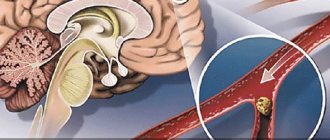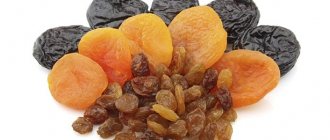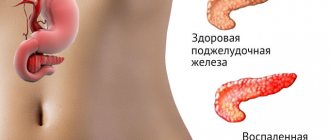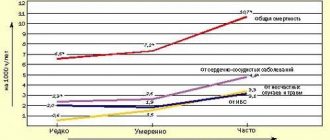Pomegranate juice is a drink made from fresh pomegranate fruits, preserving all the beneficial properties of the berry. This is a natural mix of organic acids, sugars, phytoncides, polyesters, antioxidants, tannin, folacin, amino acids, vitamins A, E, C, PP, mineral compounds (calcium, iron, potassium, sodium, magnesium, phosphorus). In terms of the amount of nutrients, fresh juice has no equal. It is not for nothing that pomegranate juice has acquired the unspoken name among the people “the king of vitamins.” It exhibits antibacterial, antiviral, anti-inflammatory properties, slows down the progression of colon, breast, and prostate cancer.
Interestingly, pomegranate increases sexual desire, due to which it is recognized in eastern countries as a symbol of love and fertility.
Botanical description
Content:
- Botanical description
- Production technology
- Chemical composition
- Beneficial features
- Contraindications and harm
- How to do it yourself
- Pomegranate for weight loss
- Selection criteria and storage
- FAQ
- Conclusion
A pomegranate is the fruit of a small tree of the Derbennikov or Pomegranate family, crowned with original sepals that resemble a crown. The name of the crop comes from the Latin word “granatus”, which means “grainy” and literally describes the structure of the fruit.
The berry is a large ball, with a diameter of 8 to 18 cm, covered with a yellow-orange or dark red peel. Under the shell are hidden small seeds surrounded by a juicy pericarp. A ripe fruit can contain up to 1000 kernels. It is hard to the touch, has a dry peel of a uniform color. It is from such specimens that the juice is squeezed. The taste of the drink is tart due to the presence of tannins and sweet due to the presence of monosaccharides.
The plant reaches 5-6 m in height, loves light, and does not bloom if shaded.
Currently, the crop is grown in the countries of the Middle East, Iran, Iraq, Afghanistan, France, Spain, Portugal, Italy, and in the territory of the former Yugoslavia. This is an extremely healthy fruit, all parts of which (fruit peel, pulp, seeds, bark and flowers of the plant) are used to prepare tinctures, decoctions, and medications for the treatment of conjunctivitis, anemia, burns, diarrhea, stomatitis, heart and genitourinary diseases.
Production technology
To prepare 1 liter of pomegranate juice, you will need 3 kg of ripe, whole, undamaged fruits, which, in turn, are harvested in October-November for 40-45 days. Two technologies for producing the drink are used on an industrial scale. The first assumes that the concentrate is accumulated in 50-ton tanks until the fruit is harvested, after which the juice is bottled. The second method is based on the technique of direct filling of bottles with subsequent shipment to their manufacturer. This option allows you to better preserve the nutritional value of the drink, since if it is stored, the amount of vitamins, macro- and microelements in the product decreases by at least 5% every day.
Production of pomegranate juice:
- Manual sorting of raw materials. At this stage, unripe, spoiled (rotten, damaged) fruits are removed from the conveyor.
- Curing juice using the method of soft pressure of grain on pneumatic membrane presses. This method, unlike the use of auger devices, is more gentle.
During the production process, a closed technological scheme is used, which involves minimal contact of raw materials with air, which eliminates the occurrence of oxidative processes.
- Gentle heat treatment using pasteurizers.
- Storing freshly squeezed juice in disinfected containers with a capacity of 50 cubic meters, made of stainless steel or bottling directly into bottles (depending on the choice of product manufacturing technology).
To increase the shelf life at this stage, food preservatives are introduced into the drink.
Remember, there are several types of pomegranate juice: freshly squeezed, freshly squeezed, aged and reconstituted from concentrate, nectar. Let's look at the difference between them. In the first case, the juice is obtained by directly squeezing the raw materials; in the second, the drink is kept in tanks for a year. During this time, it will be bottled and gradually go on sale in batches. Reconstituted juice is obtained from purified water, natural fruit flavor obtained during the production of concentrate, condensed pomegranate juice. This product is sold under the brand name “fruit juice”.
Nectar, as a rule, is prepared from not very juicy fruits (quince, feijoa, peach, apricot). The fruits are ground into a homogeneous mass, and the resulting puree is mixed with water, sugar, and 25%-50% pomegranate juice.
When choosing a product, you should pay attention to its composition. A good juice is 100% fruit. Sugar can be used as an additional ingredient.
Often nectar contains citric acid, various preservatives, flavors, dyes, and sweeteners.
The best juice is freshly squeezed without additives, the unhealthy juice is reconstituted.
In the selection process, you must give preference to a “cold-pressed” drink. This mark indicates that it was processed at low temperatures, which means it contains valuable nutrients.
To get real juice, pomegranate fruits must be squeezed with your own hands or using a cold-press juicer. High speed centrifugal devices should never be used as they operate at high speeds (10,000 rpm) which causes heating and oxidation of the raw material.
The juice is prepared immediately before consumption, only in this case the body will derive maximum benefit from the “crowned” product.
Diet after stenting
Proper nutrition after stenting is both an integral part of the treatment and the prevention of further heart problems. Not all patients adhere to the recommendations for proper nutrition. And this plays a big role in the high rate of recurrent angina and repeated stenting. Diet therapy after stenting is aimed at reducing the caloric content of food and includes the following: Restriction of animal fats in the diet - hypocholesterol diet. This means reducing the consumption of cholesterol: fatty meats (lamb, pork), lard, liver and other offal, sausages, and semi-finished products. You should not eat butter, cheese, sour cream, or cream in large quantities. also worth limiting your egg consumption to 3-4 eggs per week. All fatty foods are a source of cholesterol, which contributes to the growth of plaques in blood vessels and the progression of atherosclerosis, due to which the symptoms of coronary heart disease will resume after stenting. Limiting carbohydrates (sweets). From the products that are often on our table, we will have to cross out sweets: confectionery, white bread, carbonated drinks, ice cream, etc. In the body, carbohydrates are converted into fats that are harmful to blood vessels and the heart. That is why you should give up sweets as much as possible. It is better to replace sweets with dried fruits. Limiting foods containing high amounts of salt . It causes fluid retention in the body and increased blood pressure. Many patients with coronary artery disease who undergo stenting have hypertension. They should pay particular attention to this recommendation. The amount of salt should be reduced to 3-4 g per day (half a teaspoon). Be careful: many prepared foods (canned food, bread, etc.) contain salt, so you should limit its consumption more or less depending on what foods are present in your diet. Limiting the consumption of coffee and other drinks and products containing caffeine ( strong tea, chocolate, cocoa ). Caffeine causes vasospasm and increases heart function. The cardiovascular system works under load, which is harmful to patients with coronary artery disease and stenting. However, the diet does not require a complete abstinence from coffee. If blood pressure is controlled and there are no symptoms, it can be consumed in small quantities. The basis of the diet should be vegetable oils, fresh fruits, high-fiber vegetables, seaweed, fish (consumed at least 2 times a week), seafood, whole grains, wholemeal brown bread, nuts, legumes, lean meat and poultry. , low-fat dairy products. All these products prevent the development of atherosclerosis. Dietary fiber from plant foods binds and removes cholesterol from the intestines, omega-3-polyunsaturated fatty acids from fish and vegetable oils reduce the content of harmful lipids (low-density lipoproteins, triglycerides) in the blood and increase the content of beneficial ones (high-density lipoproteins).
Chemical composition
The usefulness of pomegranate concentrate is higher than that of pineapple, orange, and apple. In addition, it is superior to green tea in terms of antioxidants. One fruit contains one third of the daily requirement of ascorbic acid.
100 g of the edible part of the fruit contains 0.2% mineral compounds, 0.2-0.8% fat, 0.3-1.2% tannins, 0.3-5.0% fiber, 0.3-2 .8% organic acids (boric, tartaric, oxalic, citric, malic, succinic), 1.8% proteins, 7-20% carbohydrates (glucose, sucrose, fructose).
Table No. 1 “Chemical composition of pomegranate juice”
| Nutrient name | Nutrient content per 100 g of product, mg |
| Vitamins | |
| Ascorbic acid (C) | 4,0 |
| Niacinic acid (PP) | 0,4 |
| Tocopherol (E) | 0,3 |
| Thiamine (B1) | 0,04 |
| Beta carotene (A) | 0,02 |
| Riboflavin (B2) | 0,01 |
| Macronutrients | |
| Potassium | 102,0 |
| Calcium | 12,0 |
| Phosphorus | 8,0 |
| Magnesium | 5,0 |
| Sodium | 4,0 |
| Microelements | |
| Iron | 1,0 |
Pomegranate juice is useful not only to consume internally, but also to use externally for cosmetic procedures. Masks based on a fresh homemade drink remove toxins from the skin, activate metabolic processes, relieve inflammation, get rid of blackheads, smooth out wrinkles, and tighten the oval of the face. However, before carrying out cosmetic procedures, you should check the allergic orientation of the body (conduct a test).
Myth No. 1. Pomegranate juice is beneficial
Not really. The pomegranate itself actually contains a lot of substances that have antioxidant properties: flavonoids, anthocyanins, polyphenols, catechins and punicalagins. Plus, 100 g (a large handful) of grains contains 21% of the daily value of vitamin K, 17% of vitamin C and 16% of fiber.
The situation is different with pomegranate juice. “There is a general rule: juices are drinks with a high sugar content - 100 ml of pomegranate juice contains about 14% - and a low content of vitamins. Therefore, they are more harmful than useful,” says Alexey Paramonov, gastroenterologist at the Rassvet clinic. In other words, you can drink occasionally, but whole grains provide more benefits.
Beneficial features
Traditional medicine gives pomegranate juice truly miraculous properties. It is believed that it gives strength for a quick recovery. Interestingly, the drink is superior to green tea, cranberries and blueberries in terms of the amount of antioxidants, and lemon juice is superior to lemon juice in terms of citric acid content. Regular consumption of the fruit prevents the risk of developing stomach cancer. The beneficial properties of freshly squeezed juice can hardly be overestimated. It not only cleanses the body of toxins, improves well-being, but also reduces the manifestation of unpleasant symptoms during menstruation and improves mood.
Due to the high concentration of tannins, pomegranate juice should not be drunk in its pure form; it must first be diluted with water in a ratio of 1: 1. You can prepare alcoholic or non-alcoholic fruit and berry cocktails based on the drink. Pregnant and breastfeeding women are recommended to dilute fresh juice at the rate of 1 part concentrate to 3 parts water. At the same time, it is important to monitor the body’s reaction.
Remember, pomegranate juice is an aggressive concentrate that can cause severe intolerance. Therefore, if a mother has an allergic reaction while carrying a baby or during breastfeeding, rest assured, it will definitely manifest itself in the child. In addition, the drink contains citric, malic and oxalic acids, which can cause stomach irritation. Thus, extreme care should be taken when consuming the drink during pregnancy or lactation.
Medicinal properties:
- Improves heart function. When consumed regularly, pomegranate juice cleanses blood vessels of cholesterol deposits and reduces the likelihood of developing atherosclerosis. In addition, it has an anti-atherogenic effect and ensures optimal blood supply to the heart.
- Normalizes blood pressure. Freshly squeezed juice acts as a “natural aspirin” in the human body. The ability of the drink to lower blood pressure is due to the presence of phenolic compounds and antioxidants, which exhibit a mild diuretic effect, thereby reducing blood pressure.
Currently, there is an opinion among the stronger sex that pomegranate juice goes well with alcohol, but this idea is erroneous. Entering the body, cognac first dilates the blood vessels, reducing pressure in the first minutes, then they sharply narrow, which provides the exact opposite effect. To avoid heart overload, these products should not be mixed.
Pomegranate juice should not be consumed if you have low blood pressure, as it can increase the symptoms of hypotension, which will further worsen the person’s condition.
If you have hypertension (high blood pressure), you should not take a concentrated drink; it must first be diluted with water or other berry, fruit or vegetable juice.
To strengthen the walls of blood vessels, lower blood pressure, and improve heart function, you need to drink at least 200 ml of freshly squeezed juice per day.
- Helps the body with diarrhea and dysentery. In case of stool disorder, as a rule, doctors strictly prescribe to exclude fruit juices from the victim’s diet, since they have a laxative effect on the intestines. However, this recommendation does not apply to pomegranate concentrate. On the contrary, it is useful to use both for constipation and diarrhea. The thing is that the juice contains organic acids, which increase the level of necessary digestive enzymes, helping to normalize digestive processes.
Tannins, which give the fruits a tart taste, ensure consolidation of the consistency of stool, and pectin removes toxic substances from the body that accumulate when stool is disrupted.
- Increases sexual activity of men who suffer from erectile dysfunction, improves sperm quality, and helps overcome prostate symptoms. The antioxidant components contained in pomegranate juice increase blood circulation and enhance the effect on smooth muscle tissue. As a result, the active age of men is extended.
- Relieves anemia, starts the process of increasing hemoglobin in the blood due to the presence of easily digestible iron and ascorbic acid in the composition.
- Facilitates the condition of women during pregnancy, breastfeeding, and menstruation. The active components of pomegranate juice help cope with toxicosis, remove excess fluid from the body, relieve swelling, give strength, increase performance, and minimize the likelihood of cramps in the legs.
- Strengthens the immune system, accelerates metabolic processes, and relieves inflammatory processes. Concentrated pomegranate juice has a strong antibacterial and antimicrobial potential, increases the body's barrier functions and its ability to resist infections.
During viral epidemics, as well as during colds, a freshly squeezed fruit drink will protect you from the risk of catching the flu and seasonal runny nose.
- Reduces the risk of cancer. Pomegranate fruits contain 15 amino acids, which makes it the undisputed leader among other fruits in terms of the content of this type of organic compounds. In addition, it contains anthocyanins, isoflavonoids, and antioxidants that improve the functioning of all internal organs and systems.
Pomegranate juice prevents breast cancer and increases the effectiveness of treatment during chemotherapy. The healing properties of the drink are due to the components of the fetus, which in turn block the synthesis of estrogen, which stimulates the appearance of breast tumors.
To prevent cancer, women of all ages are recommended to drink a glass of freshly squeezed pomegranate juice every day.
- Regulates blood sugar levels. The drink cleanses and strengthens blood vessels, maintains stable glucose levels.
Fresh pomegranate juice is beneficial for diabetes.
- Eliminates inflammatory processes in the liver, alleviates the condition after a hangover.
Remember, the “miraculous effect” of a drink depends on its quality. The natural product does not contain flavorings, preservatives or dyes. When choosing pomegranate juice, you should give preference to a freshly squeezed product rather than a bottled one. It’s even better to prepare it at home from high-quality ripe fruits using a juicer or by hand. The only drawback of the resulting natural drink will be slight bitterness. To improve the taste of the juice, drink it with cane sugar or flower honey.
What are the benefits of pomegranate for the human body?
Pomegranate is a fruit of exotic origin, familiar to most of us. In addition to its unusual sweet and sour taste, it is attractive for its many beneficial properties that have a beneficial effect on the human body. Pomegranate is rich in vitamins and minerals. The benefits are hidden not only in the pulp of the fruit, but also in the seeds and even the peel.
Useful composition of pomegranate
In addition to minerals, potassium, calcium, sodium and iron, pomegranate contains large quantities of vitamins: C, P, E, B, A. Each of them helps improve health. For example, vitamin C strengthens the immune system, B6 is responsible for the nervous system. Vitamin P strengthens blood vessels, and B12 has a positive effect on the functioning of the cardiovascular system. Flavonoids or P vitamins prevent the development of tumors and the growth of cancer cells. Vitamin A is responsible for vision and helps restore pigments in the retina.
In addition, pomegranate contains tannins that effectively fight tuberculosis and E. coli. One of these substances, tannin, copes well with indigestion and diarrhea.
Doctors advise regularly introducing pomegranate into the diet of older people, patients after surgery, and those who suffer from heart disease. Pomegranate will be of great benefit in case of exhaustion of the body, anemia, atherosclerosis, and will be a good preventive remedy for colds.
Often, pomegranate or pomegranate juice is consumed to normalize high blood pressure. Due to the high iron content in this fruit, it is able to stimulate the growth of hemoglobin and red blood cells - erythrocytes. Pomegranate is a good helper in the fight against anemia.
Benefits of pomegranate juice
The increased content of amino acids in freshly squeezed pomegranate juice allows you to normalize vital processes in the human body. The cleansing effect of the drink has been proven by experts. The juice acquired this quality thanks to the antioxidants contained in the pomegranate pulp.
Experts recommend drinking pomegranate drink to stimulate appetite, as well as for low hemoglobin. Hypertension, kidney and liver diseases are a reason to start regularly drinking pomegranate juice. The drink is advisable for people with depressive disorders and insomnia.
What are the benefits of pomegranate seeds?
For medicinal purposes, pomegranate seeds are used in ground form. A peculiar powder serves as a natural medicine for headaches and high blood pressure. The seeds are used in cosmetology, producing essential oils from them.
The juice of pomegranate seeds contains the maximum concentration of iron, which effectively increases hemoglobin.
Using the peel
For treatment, the peel is ground into powder. It has a characteristic astringent effect, so it easily copes with inflammation of the small and large intestines - enterocolitis.
The crushed peel has the effect of rapid healing of wounds, abrasions and scratches on the skin. The powder is also an effective assistant in the fight against parasites.
Pomegranate does not have increased allergenic properties, so it is allowed to be consumed by pregnant women to improve health, improve the functioning of the heart and blood vessels. By the way, scientists have found that women who regularly drink pomegranate juice or eat oriental fruit are less at risk of developing breast cancer. The oriental fruit is valuable for beautiful ladies for its properties that support the beauty and health of the skin.
Pomegranate is often used in folk medicine. With its help, many diseases are treated, including colds, used as a strengthening diuretic, and used for menstrual pain.
Doctor - hygienist
Gapanovich Valentina,
Valeologist
Dmitrieva L.I.
Contraindications and harm
First of all, pomegranate concentrate cannot be consumed in its pure form due to its high content of organic acids. By affecting dentin, it negatively affects the strength of tooth enamel, which can lead to a violation of its integrity and the appearance of caries. It is recommended to drink the drink through a straw and be sure to rinse your mouth with water after drinking. Under no circumstances should you brush your teeth right away, as you may scratch the weakened enamel.
Contraindications:
- peptic ulcer of the duodenum or stomach, gastritis, accompanied by high acidity, heartburn;
- constipation, hemorrhoids;
- allergy;
- pancreatitis.
Remember, concentrated pomegranate juice is irritating to the stomach and esophagus, so it should be mixed with water before drinking. In excessive quantities, the drink is harmful to human health and can cause convulsions, increased blood pressure, dizziness, blurred vision, constipation, colitis, the transition of gastritis or ulcers from chronic to acute.
The safe daily intake of pomegranate juice is 200-400 ml.
Infants and children under one year of age are strictly prohibited from introducing the drink into complementary foods, since pectin compounds, folacin and tannins have a pronounced effect on the baby’s weakened digestive system, which can harm the child, lead to overload and inflammation of the gastrointestinal tract, and the development of an allergic reaction.
How to do it yourself
To avoid purchasing store-bought counterfeits, it is recommended to prepare fruit, vegetable and berry juices yourself. This can be done using a mechanical or electric juicer.
Which method of processing fruits should you prefer and how to do it correctly?
First of all, you should analyze the available material resources, and also determine how much juice will need to be squeezed out regularly.
A manual juicer is a budget option for systematically obtaining no more than 400 ml of concentrate per day. For these purposes, you can use a device model designed for citrus fruits. To obtain juice, pomegranates are cut in half, placed with the flesh down on a cone-shaped peak and, using physical force, the product is slightly twisted in different directions.
Another type of mechanical juicer is a press. In this case, you do not need to scroll the fruit on the cone; you just need to put half the fruit in the bowl and lower the lever, applying force. This method of processing pomegranate allows you to obtain pure juice with a minimum pulp content. However, the procedure cannot be carried out too quickly, otherwise the splashes will scatter in all directions. The fruit can also be squeezed out by hand.
The greater the load on the product, the sooner the juice will flow out. However, this method of processing the fruit causes a lot of trouble and does not allow you to squeeze it out to the maximum.
To make your work easier, it is recommended to give preference to an electric juicer, which will make the process of making juice as fast and comfortable as possible. Unlike mechanical devices, it has a motor with a power of 20 to 100 W. To obtain juice, simply peel the fruit, cut it in half, put it in a bowl, lower the holder, and turn on the machine. In just a couple of minutes the juice will be ready to drink.
Freshly squeezed natural concentrate is slightly bitter, since the partitions are not removed from the fruit during the pressing process. They, in turn, contain the phenolic compound tannin, which gives the drink a bitter taste.
Pomegranate for weight loss
During weight loss, the human body is in a state of stress and experiences an increased need for vitamins and mineral compounds. To maintain the balance of nutrients, low-calorie granular pomegranate fruit is introduced into the diet of those losing weight. 100 g of product pulp contains no more than 56 calories, 8-25% seeds, 26-49% peel, 50-75% juice.
The benefits of pomegranate lie in the grains, which help break down fat cells in the body and normalize metabolism.
People with gastrointestinal diseases (especially ulcers, gastritis), individual intolerance to fruit should abandon this weight loss technique. In addition, pomegranate juice strengthens, so if you have constipation, you should avoid using it.
What are the variations of weight adjustment using a fruit drink?
Fasting days
There are two options for the daily diet menu. In the first case, during the fasting day, you should take pomegranate juice (1 liter) every 2.5 hours, diluted with water in a ratio of 1: 1. In the second, 3 additional fruits are added to the “liquid” diet. In this case, the diet menu is structured in such a way as to alternate pomegranate and juice intake. This option is suitable for people who do not tolerate fasting well.
Pomegranate diet
This weight loss method is designed for 10 days. The main feature of the diet is not to drink pomegranate juice on an empty stomach, since in this case it will stimulate the appetite. That is why it is recommended to drink it exclusively between meals three times a day, 200 ml. On the pomegranate diet you can lose up to 4 kg in 10 days. At the same time, it is important to ensure that the caloric content of the daily diet of a person losing weight does not exceed 1500-1700 kcal.
First of all, after waking up, you need to drink a glass of water, after 30 minutes eat half of one pomegranate fruit. The second breakfast consists of boiled buckwheat (150 g). During its preparation, you cannot use butter, sugar, salt and other dressings. For lunch, you are allowed to eat low-fat steamed fish (100 g) in combination with boiled buckwheat (100 g). For afternoon snack – one apple. The dinner is crowned with a salad of greens, cucumbers, tomatoes (100 g) and boiled buckwheat (100 g). At night you should drink 200 ml of kefir 1%. Contrary to popular belief about the fat-burning properties of fermented milk drink, it does not solve the problem of “slow metabolism” at all, but makes it easier to tolerate a low-calorie diet.
Nutritionists do not recommend increasing the duration of the pomegranate diet, since due to the aggressive effect of the fruit juice on the gastric mucosa, you can get gastritis. In addition, it lowers blood pressure, which is dangerous for hypotensive patients.
Slimming mixture
Recipe for preparing a miraculous composition: the pulp of one pomegranate along with the seeds is kneaded in a mortar, 10 ml of olive oil is added and stirred thoroughly. Drink the resulting mixture twice a day before meals. The principle of its action is based on cleansing the body. Once in the digestive tract, it absorbs waste and toxins like a sponge and saturates it with healthy unsaturated omega acids. As a result, those losing weight experience lightness and comfort. In addition, when drinking juice with pulp and seeds, the general condition of the body improves: cellular regeneration processes are accelerated, headaches are reduced, the nervous system is restored, hormonal levels are normalized, cholesterol levels are reduced, excess fat reserves are burned, and bones are strengthened.
Interestingly, pomegranate can be used to make cocktails that stimulate metabolic processes in the body. It is better to prepare fruit and berry and fruit and vegetable juices yourself immediately before consumption and serve in glass glasses. This will eliminate the possibility of oxidation of the vitamin drink. To speed up metabolism, it is recommended to mix pomegranate juice with grapefruit, lemon, apple or carrot juice. They not only help burn fat deposits, but also prevent the development of vitamin deficiency.
University
→ Home → University → University in the media → Unloading therapy after myocardial infarction
Patients who have suffered an acute myocardial infarction and have post-infarction cardiosclerosis should be taught the skills of unloading therapy, which reduces the load on the heart. Such therapy consists of drug and non-drug therapy.
Long-term controlled multicenter studies have proven the effectiveness and safety of the following groups of drugs for unloading therapy: 1) antiplatelet agents (aspirin) - reduce blood clotting; 2) β-blockers - normalize heart function and rhythm, reduce blood pressure; 3) angiotensin-converting enzyme inhibitors (ACEIs) - protect the heart and blood vessels from the development of heart failure; 4) cholesterol-lowering drugs (statins) - normalize cholesterol levels in the blood.
A properly selected set of non-drug treatment for cardiosclerosis will help to sharply reduce the number of medications taken, slow down the evolution of atherosclerosis and the development of circulatory failure.
Non-drug treatment is an impact on manageable risk factors: total cholesterol, LDL cholesterol, hypertension, glucose levels, etc.
Cholesterol in patients with coronary artery disease should not exceed 3.4 mmol/l, and in healthy people with risk factors (alcohol, smoking) - no more than 4 mmol/l. Smoking is unacceptable, it contributes to the rupture of the plaque, the formation of a blood clot on it with disruption of the lumen of the vessel and the development of ischemia.
The fight against cholesterol begins with a diet (up to 3 months) without lipotropic drugs. It is necessary: • consume a minimum of animal fats - white meat (poultry), lean beef. Limit dairy products; • introduce into the diet foods containing Omega-3 fatty acids (fatty fish, vegetable oils, nuts, seeds, etc.); • eat more vegetables (raw, stewed, boiled, baked); • reduce salt intake (3-4 g per day) to slow down fluid retention in the body and remove it; • exclude alcohol, smoked foods, fried and fatty foods; • include garlic, whole grains, cabbage, tomatoes, spinach, and apples in your diet.
Down with excess weight
The following rules must be observed: • sharply limit fats with saturated fatty acids; • increase the consumption of seafood, fish (2-4 times a week), seaweed; • reduce the amount of carbohydrates (due to sugar, honey, sweet fruits and berries). The source of carbohydrates can be cereals, wholemeal bread, and vegetables. It is necessary to reduce the consumption of saturated fats and cholesterol: • before cooking, remove fat from meat, remove skin from poultry; • cool the broth and soup to remove hardened fats from the surface; • vegetables absorb fat, so they should not be cooked together with meat; • replace whole milk with skim milk; • it is not advisable to add butter to rice dishes, pasta, or mashed potatoes; • reduce portions that contain a lot of fat and cholesterol, and increase portions of cereals and vegetables.
An appropriate daily caloric intake helps maintain normal body weight.
A special diet for correcting body mass index (BMI) is prescribed for BMI > 30, impaired glucose tolerance, diabetes or persistent hypertension. The diet of modern humans in developed countries has three components of atherogenicity - excess: 1) cholesterol, 2) saturated fats, 3) calories. The daily caloric intake is distributed as follows: 40% - breakfast, the last meal - no later than 19:00, less than 7% of calories should come from saturated fats.
After 60 years, you need to follow a diet close to vegetarian.
However, diet alone will not completely relieve the cardiovascular system.
Move to the max
An adequate motor regimen is needed that allows you to spend up to 2,000 kcal/day: walking at a fast pace (100–120 steps/min.) up to 8 km per day; do aerobics, physical exercise, swimming. The effectiveness of non-drug treatment is assessed by the clinic and lipid metabolism indicators after 3 months (lipid reduction should be 20% of the initial level). If the result is good, then therapy is continued; if not, lipid-modifying drugs are prescribed. You can increase physical activity, but you cannot work too hard. Work in the country is considered very difficult (you need to take breaks every 20–30 minutes). You can more accurately determine the patient’s load using a 6-minute test (walking at any pace for a specified time): • walked 100–150 m - low physical capabilities; • walked 300 m - average; • walked more than 500 m - good. In the first case, it is recommended to walk around the room and take 2-3 deep breaths every 5 minutes, devoting 1-2 hours a day to such exercises. In the second case - light loads, activity up to 8 hours a day, walking up to 30 minutes, 1 km in 15 minutes, up to 10 km per week. In the third case - daily activity 10-12 hours, combined loads, walking - 45 minutes, 1 km - in 12 minutes, up to 20 km per week. The degree of unloading of the cardiovascular system depends significantly on the state of the nervous system. In a normal state, a person adapts to the environment, successfully performs physical activity, professional and social functions - all this improves the quality of life. Particular attention should be paid to the development of depression in patients, which is often found in patients with cardiovascular pathology. Calming herbs can be recommended.
Raisa Novikova , Associate Professor of the 1st Department of Internal Medicine, BSMU; Natalya Polevkova , head of cardiology (infarction) department No. 2, 10th City Clinical Hospital of Minsk Medical Bulletin , July 17, 2014
Share
Selection criteria and storage
If it is not possible to prepare pomegranate juice, you can buy it in the store, but how can you buy a high-quality, healthy product and not fall for the marketing tricks of the manufacturers? To do this, you need to pay attention to the color, composition, name, price and packaging of the product. As a rule, in these positions the manufacturer indicates important information that notifies the buyer about the authenticity of the product.
Tips on how to choose and distinguish natural juice from fake:
- Package. A high-quality, premium product is always packaged and sold in glass bottles. At the same time, its expiration date must be indicated on the label, and the production date is in the “September-January” range, which corresponds to the pomegranate harvesting season.
- Price. Natural juice cannot be cheap. To obtain 1 liter of pomegranate concentrate you will need 3 kg of fruit. In addition, it is worth considering that the price of the final product consists not only of the cost of raw materials and packaging, but also of the method of its processing and transportation distance.
Remember, in countries where pomegranate juice is grown, it is cheaper than in areas where it is not cultivated.
- Name. The label should only contain the word “juice” (directly pressed) and not “nectar”.
- Manufacturer. The exporter should be the state where the pomegranate grows. It is cultivated in Iran, Spain, Italy, the countries of the Middle East, Portugal, Tajikistan, Uzbekistan, Greece, the Caucasus, Afghanistan, France, southern Dagestan, Azerbaijan, and Armenia.
- Compound. Natural pomegranate juice does not contain preservatives, glucose, dyes, concentrated fruit, vegetable, berry puree or other juice, such as beetroot.
- Color. The natural concentrate has a very rich, red-burgundy color and a pink sediment at the bottom, which completely dissolves when the jar is shaken. The drink is translucent in the sun. Too red or, conversely, a light color indicates that the product has been diluted with water. While a brown tint indicates that the juice is made from rose hips or pomegranate peels.
An open can of canned juice is stored at a temperature of +3...+6 degrees under a tightly closed lid for no more than 24 hours. It is recommended to prepare the drink yourself or buy it from trusted manufacturers.
Which pomegranate juice company is better?
Supplier rating: “YA” (Russia), “NOYAN PREMIUM” (Armenia), “4U” (Azerbaijan). According to test samples, pomegranate juice from these manufacturers does not contain chemical additives, they comply with technical regulations.
How to choose the right pomegranate juice if you really want it
Ideally, of course, cook it yourself. For one glass you will need 2-3 fruits. A juicer, hand citrus press or blender will help. But if you can’t make a drink at home, buy a freshly squeezed one at the market (it’s better if they prepare it in front of you).
As a last resort, find a high-quality option in the store: it should be labeled “100% pomegranate juice,” directly pressed, with a simple composition (that is, the drink should not contain anything other than pomegranate), cost no less than 160-200 rubles per liter and produced from September to November.
Paramonov Alexey Dmitrievich gastroenterologist
, Ph.D.
FAQ
What to do if pomegranate juice has fermented?
In this case, you can make homemade wine from it. To do this, sugar and raisins are added to the fermented juice, and the wort is left for a week. Then vodka is added to the composition, wait another 5 days, filter the drink, and bottle it. In addition, pomegranate makes a delicious tincture.
At what age can you drink juice?
From one year of age, provided there is no allergy to pomegranate. In addition, the drink should not contain pulp or seeds. Juice can be given between meals, but in no case in the morning (instead of breakfast).
Note to young mothers: fresh pomegranate for children is made independently from fresh fruits immediately before use. To do this, just squeeze and strain part of the fruit. The drink is introduced into the baby’s diet with one teaspoon (5 ml). In the absence of an allergic reaction, the dose is gradually increased to 10-15 ml. The juice must be given in diluted form no more than twice a week.
Remember, pomegranate drink should not be given to a newborn baby with a weakened digestive system. It should also be included with caution in the diet of a young mother while breastfeeding. During this period, the baby’s body is most sensitive to milk. If a nursing woman drinks a pomegranate drink and the baby refuses to breastfeed, begins to act up, cry, or develops a rash on his body, you should immediately stop taking it. Most likely, the baby’s body is not yet ready to accept a new product with mother’s milk.
Is it possible to include pomegranate in the menu of diabetics?
Yes, it helps lower blood sugar levels.
Does pomegranate juice weaken or strengthen?
Fastens.
Is it possible to drink pomegranate juice if you have gout?
Yes, but in moderation, not exceeding the daily portion of the drink. It normalizes uric acid and cholesterol levels in the blood.
Pomegranate – benefit or harm in early and late stages of pregnancy?
This is a valuable product recommended for use by the expectant mother throughout the 9 months of bearing the baby. It improves overall well-being, elevates mood, increases performance, helps to cheer up, alleviates toxicosis, eliminates stomach discomfort, and maintains normal hemoglobin levels. Scurvy and anemia are treated with freshly squeezed concentrate.
Is it true that pomegranate juice is prescribed for bleeding?
Contrary to popular belief that fruit thins the blood, on the contrary, it thickens it a little, increasing coagulability. Thanks to this, the drink helps reduce blood loss during childbirth and strengthen gums during pregnancy.
Why do you always want pomegranates?
Most likely, the body needs iron, which increases hemoglobin.
How to remove red stains from pomegranate?
You need to act quickly. To do this, just put dirty clothes in cold water with the addition of soda and leave for 30 minutes. Then rinse the item as usual.
Why does my urine turn red after drinking pomegranate juice?
The fruit contains coloring pigments that give urine a scarlet hue. However, at present there is no consensus on whether this phenomenon is harmless or dangerous. Some believe that there is nothing wrong with this, others argue that the change in urine color is due to the fact that the kidneys are not coping with their function. Therefore, if such a situation arises, it is recommended to undergo tests and diagnose the organs of the excretory system.
How is pomegranate juice used in cooking?
It is used to prepare sweet and sour sauce for main dishes. In addition, you can marinate meat in natural pomegranate juice (to soften the fibers) and bake it in the oven.
Myth No. 2. Pomegranate juice can be used to treat
It is believed that pomegranate juice should be drunk to improve blood formation, as well as with low levels of iron and hemoglobin.
“In fact, nothing can be treated with pomegranate juice; its advantages are purely culinary. If iron and hemoglobin are already reduced, medications are needed in tablets, and sometimes in the form of intravenous injections,” says Alexey Paramonov. And maintaining normal iron levels solely with the help of juice is also problematic: one glass contains only 0.249 mg of the mineral. That is, in order to get any closer to the daily norm of 8-27 mg, you will have to drink at least two liters per day, which can lead to too much sugar. In general, a smarter option is to drink one glass of pomegranate juice periodically and regularly include a variety of foods higher in iron in your diet.
A doctor can recommend adding pomegranate juice to the diet only in one case: when a patient with various diseases of the gastrointestinal tract needs to recover from strict diets (for example, Pevzner’s fifth or first), which often lead to a deficiency of vitamins and body weight. In this situation, juice can improve the situation.











